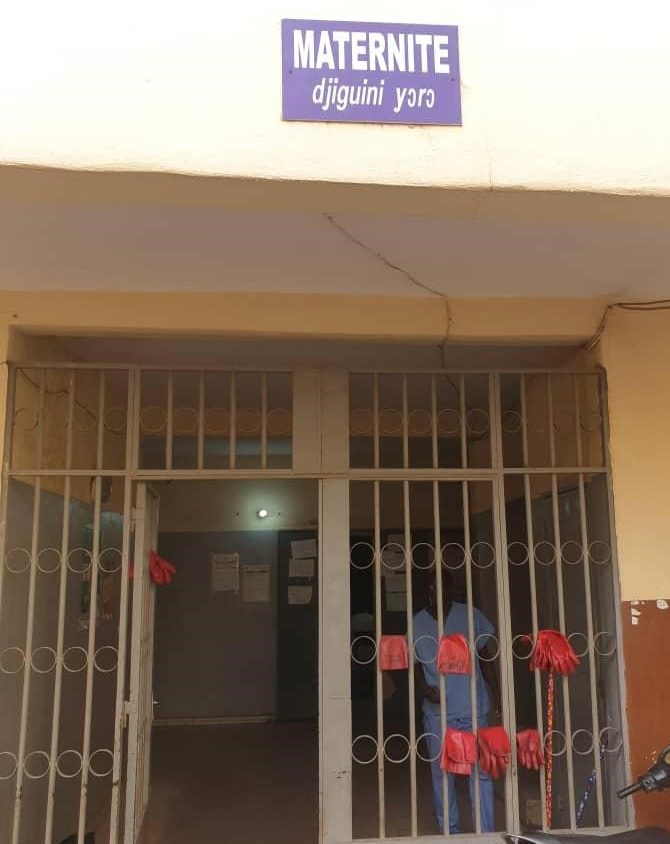Strengthening Community-Based Perinatal Mortality Surveillance Systems
Written by Ilana R. Siegal, MD, MA, Mamadou Berthé, PhD, and Modibo Soumaré, MD, from the Stillbirth Advocacy Working Group
A 26-year-old woman arrived at an urban health center in Mali, West Africa, 40 weeks pregnant. A medical officer had referred her to the center for failure to progress in labor. She attended four prenatal care visits with normal findings and completed all recommended prophylaxis. Upon examination, one of the authors, Dr. Soumaré, could not hear a fetal heartbeat and found meconium-stained amniotic fluid. The young woman’s first full-term pregnancy ended with delivery of her stillborn son.
This devastating instance of a mother losing her baby is one of the many examples of stillbirths occurring in Mali and around the world today. However, due to the lack of complete stillbirth registration, the estimated burden of stillbirths varies based on different data sources (Table 1). Whether the true rate of stillbirths is 19.7, 23, or 33 per 1,000 births, these numbers are all too high because the vast majority of stillbirths worldwide are preventable.
Table 1: Variations in stillbirth rates reported in Mali
| Source | Stillbirth Rate (per 1,000 total births) | Year | Population and type of estimate |
|---|---|---|---|
| World Health Organization (WHO) | 19.7 28.2 | 2019 2000 | National, estimated rates |
| UNICEF | 33 | 2015 | National, estimated rates |
| Berthe & al. | 23 | 2008-2016 | According to data from the Health Information System |
This wide variation of reported stillbirth rates demonstrates a key challenge in addressing stillbirths in Mali: the collection and reporting of data at the community level. Without knowing the number, location, and circumstances of stillbirths, it is difficult for healthcare providers and governments to address the underlying causes. Socioculturally, stillbirths often go underreported because they are perceived as less painful than maternal deaths. Additionally, women often have home births, unless they experience labor difficulties and make the long, arduous journey to a health center, and data reporting for home births is even lower.
Over the past ten years, global health agencies and government ministries have focused attention on strengthening civil registration and vital statistics (CRVS) systems as reflected in the United Nations Economic and Social Commission for Asia and the Pacific (UNESCAP) Civil Registration and Vital Statistics (CRVS) Decade and the annual Conference of African Ministers for Civil Registration. However, efforts to improve data on stillbirths through the CRVS lag behind the investment in improving birth and death registration.
To seek to improve reporting of perinatal and neonatal deaths, including stillbirths, the Malian Ministry of Health and Social Affairs created the Perinatal and Neonatal Audit Guide with surveillance reporting standards. Even with the cultural and health-seeking challenges resulting in stillbirth underreporting, co-author Dr. Berthé was stunned by the high number of stillbirths reported weekly. In his capacity as the Maternal and Perinatal Surveillance Lead at the Ministry of Health and Social Affairs, he often received reports of over 60 stillbirths per week. This revelation prompted his membership in the International Stillbirth Alliance (ISA) to learn about stillbirth prevention in resource-limited settings and establish a peer network.
Through the ISA network, Dr. Berthé learned about the Bloomberg Philanthropies Data for Health Global Grants Program (GGP), a funding mechanism to improve the collection and use of public health data, including CRVS (see below). Through the GGP, Dr. Berthé receives financial support through Vital Strategies and technical support from the CDC Foundation, both agencies within the Data for Health partnership. Dr. Berthé aims to strengthen community-based perinatal mortality surveillance guided by the standards developed by the Ministry of Health and Social Affairs. At the village level, trained Community Health Workers will utilize an electronic tool to collect, record and report real-time data on perinatal deaths in two health districts. If the results prove beneficial after comparison to two other health districts in the same regions, this system will be implemented in other districts in the region.
Having seen too many stillbirths clinically and via data reporting, Dr. Berthé and Dr. Soumaré are committed to moving stillbirths out of invisibility. Through their work to improve information on stillbirths in Mali, they hope to inform future interventions, so no mother loses her baby to a preventable death.
This post from the Stillbirth Advocacy Working Group (SAWG) reflects the perspective of the authors alone; it does not represent the views of the SAWG. The Stillbirth Advocacy Working Group was founded by the Partnership for Maternal, Newborn and Child Health, and is co-chaired by the International Stillbirth Alliance and the London School of Hygiene & Tropical Medicine. Email co-chairs Hannah Blencowe or Susannah Leisher at hannah.blencowe@lshtm.ac.uk or susannah.leisher@hsc.utah.edu. To learn more or sign up to join the group by emailing sawg@stillbirthalliance.org.

 Ilana R. Siegal, MD, MA is a recent graduate of Wright State University Boonshoft School of Medicine in Ohio. She participated in the Epidemiology Elective Program through the Centers for Disease Control and Prevention (CDC). She interned at the National Center for Health Statistics (NCHS) in the Division for Vital Statistics, Mortality Statistics Branch. She earned her B.A. in international relations at Syracuse University with concentrations in international political economy and the Middle East. She followed with an M.A. in Bioethics at Case Western Reserve University, where she studied women’s and public health practices in The Netherlands. Clinical and social outreach experiences in Nicaragua, Israel, Cuba, and Eswatini inspired Ilana to fight for equitable access to medical care worldwide.
Ilana R. Siegal, MD, MA is a recent graduate of Wright State University Boonshoft School of Medicine in Ohio. She participated in the Epidemiology Elective Program through the Centers for Disease Control and Prevention (CDC). She interned at the National Center for Health Statistics (NCHS) in the Division for Vital Statistics, Mortality Statistics Branch. She earned her B.A. in international relations at Syracuse University with concentrations in international political economy and the Middle East. She followed with an M.A. in Bioethics at Case Western Reserve University, where she studied women’s and public health practices in The Netherlands. Clinical and social outreach experiences in Nicaragua, Israel, Cuba, and Eswatini inspired Ilana to fight for equitable access to medical care worldwide. Mamadou Berthé, PhD is a Doctor of Public Health specializing in epidemiology. In November 2021, he defended his PhD thesis on the determinants of stillbirth in two Referral Health Centers in Mali (Sélingué and Yorosso). He has served as a Research Associate at the National Institute of Public Health since 2020. Previously, he worked at Mali’s General Directorate of Health and Public Hygiene (November 2013 to February 2020). He is the author of several publications on maternal and child health.
Mamadou Berthé, PhD is a Doctor of Public Health specializing in epidemiology. In November 2021, he defended his PhD thesis on the determinants of stillbirth in two Referral Health Centers in Mali (Sélingué and Yorosso). He has served as a Research Associate at the National Institute of Public Health since 2020. Previously, he worked at Mali’s General Directorate of Health and Public Hygiene (November 2013 to February 2020). He is the author of several publications on maternal and child health. Modibo Soumaré, MD has been a gyneco-obstetrician, hospital practitioner, and a specialist in the audit of maternal and perinatal deaths since June 2000. He has been involved in the development and implementation of tools for the surveillance and prevention of maternal and perinatal deaths. He currently manages both clinical and public health issues as the Chief Medical Officer of the Reference Health Center of Commune 3 of the district of Bamako in Mali. He is the author of several publications on maternal health and particularly on maternal death audits.
Modibo Soumaré, MD has been a gyneco-obstetrician, hospital practitioner, and a specialist in the audit of maternal and perinatal deaths since June 2000. He has been involved in the development and implementation of tools for the surveillance and prevention of maternal and perinatal deaths. He currently manages both clinical and public health issues as the Chief Medical Officer of the Reference Health Center of Commune 3 of the district of Bamako in Mali. He is the author of several publications on maternal health and particularly on maternal death audits.